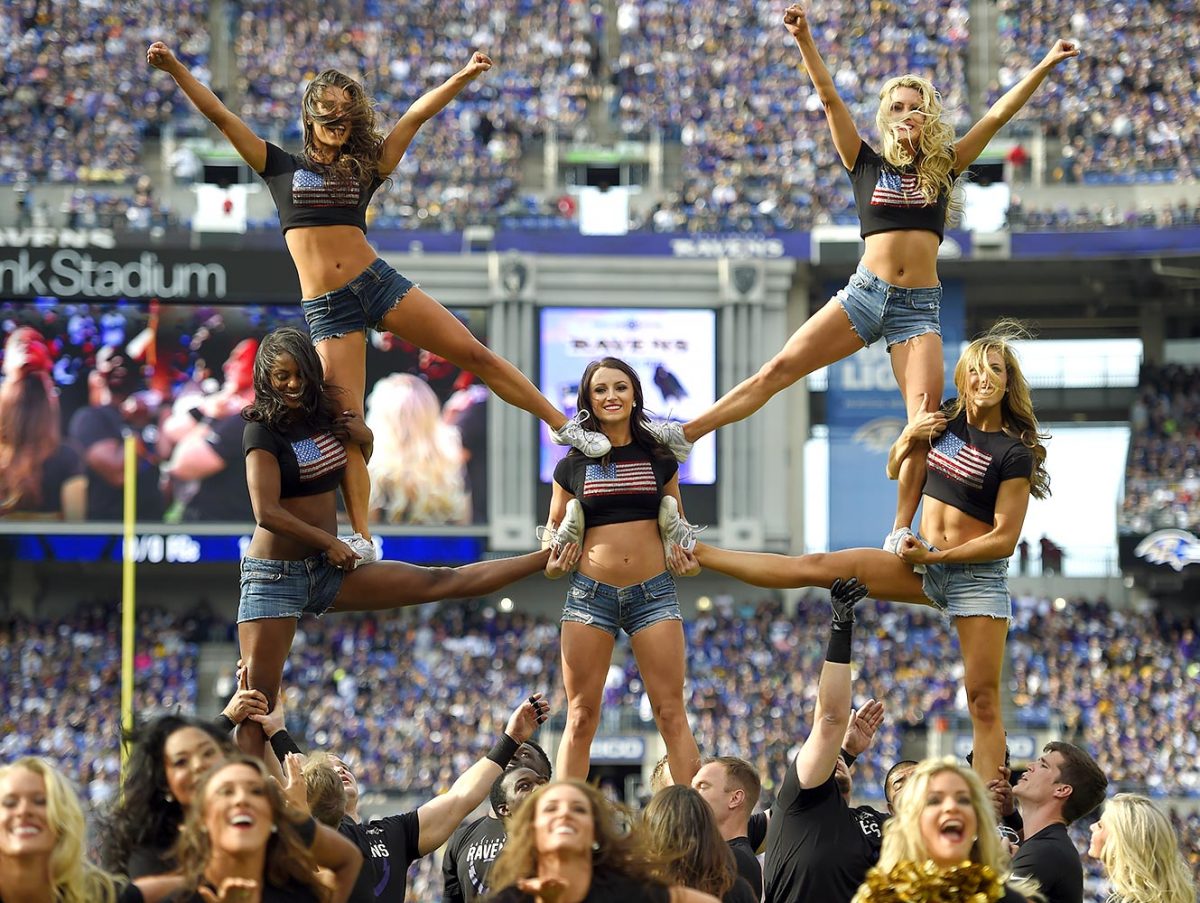Lacy Thibodeaux Fields was fortunate enough to be chosen as an NFL cheerleader, a dream come true for many. However, at home, she was a young mom struggling to pay bills and buy diapers for her toddler, Scarlett.
Even though she spent hours each week in practice, on game days, and at community events, her paycheck was a mere $125 per game, totaling just over $1,000 for the season. But it wasn’t paid out until nine months after the season ended.
“It was my dream to be there, so I was soaking in every moment of pure joy. But then there was the frustrated young mom side of me that was actually living a totally different experience,” Thibodeaux Fields explained. “Living in the truth of it was so different. That’s what really sparked the conversation in my household: This isn’t right.”
In 2014, Thibodeaux Fields made history as the first cheerleader to file a lawsuit against her NFL team, accusing the Raiders of violating state minimum wage and labor laws. Her case exposed how young women had been financially exploited for years, promised little pay in exchange for a position in one of sports’ most elite groups.
Her lawsuit revealed strict team guidelines—like a “bible” for the Raiderettes that detailed how they should look and behave. For example, cheerleaders had to pay $150 for a hair treatment to achieve a specific look, maintain a tan, and keep their weight under 103 pounds.
Any mistake, such as showing up with the wrong pom poms, could lead to fines that doubled each time. As a result, cheerleaders often ended the season with little to no salary.
Other cheerleaders noticed similar issues with their teams. In 2014, lawsuits followed from cheerleaders with the Buffalo Bills, Tampa Bay Buccaneers, Cincinnati Bengals, and New York Jets. They claimed they were paid very little or nothing for their hard work.
For instance, the Buccaneers cheerleaders earned just $100 per game, and the Jets paid $150. The Bengals cheerleaders argued they were paid about $2.85 an hour, while Bills cheerleaders got nothing.
Further lawsuits followed, leading to a congressional inquiry over allegations of sexual harassment. Additionally, state bills were introduced in California and New York to raise cheerleaders’ wages, with the California bill eventually passing.
Why has so little changed after a decade?
The sexism surrounding cheerleading is still strong, even in a post-#MeToo time. Many people still have fixed ideas about what cheerleaders are for and how much they are worth, and these views remain unchanged, even among the cheerleaders themselves.
These beliefs impact everything from their pay to how open they are about workplace abuse. In the sports world, where men usually hold the power, the feminist movement hasn’t reached the football field.
This summer, the issue of pay came up again when the Netflix documentary “America’s Sweethearts” about the Dallas Cowboys cheerleaders aired. In the first episode, former Cowboys cheerleader Kat Puryear revealed that her salary up until 2022 was comparable to that of “a substitute teacher” or “a Chick-fil-A worker that works full time.” She later added on TikTok, “It’s a full-time commitment, but part-time pay. It’s a lot of work.”
The topic of pay was discussed for just one minute and 46 seconds in the nearly seven-hour series, but it sparked a lot of conversation. Social media lit up with comments about why the cheerleaders were paid so little that they had to take second jobs.

One viewer said the pay discussion in the documentary made their “blood absolutely boil.” TV critic Judy Berman from Time pointed out that viewers would think the Cowboys would pay their cheerleaders more, given their skills, responsibilities, and visibility, but instead, they were “casualties of a job market, a form of entertainment, and a society in which misogyny is so deeply ingrained.” Writer Anne Helen Petersen was more direct: “The pay is shit.”
But finding out how much professional cheerleaders are paid now is difficult.
Pay, the law, and cheerleaders
NFL teams are franchises, so they decide how much to pay their staff. In the 2014 lawsuits, some teams argued that they hired cheerleaders through third-party contractors as seasonal workers. In most states, this makes cheerleaders independent contractors, not employees, meaning they’re not protected by the Fair Labor Standards Act, the law that sets rules for minimum wage and overtime.
As a result, the third-party firms can set pay rates lower than the federal or state minimum wages. Unlike players, who have unions to negotiate better pay, cheerleaders have no union or group to support them. If something goes wrong, they have to figure out the law, hire a lawyer, and rally others to help.
The 19th reached out to six NFL teams, including the Cowboys and those named in the 2014 lawsuits—Raiders, Jets, Bengals, Bills, and Buccaneers—asking about their current cheerleader pay rates. Only the Buccaneers’ spokesperson, Nelson Luis, responded. He said the team doesn’t comment on employment matters but has made sure its pay is in line with industry standards and follows applicable laws.
NFL spokesperson Brian McCarthy told The 19th that the league advises teams with cheerleading squads to follow all relevant state and federal workplace policies.
If cheerleader pay is based on the federal minimum wage, it’s $7.25 an hour. Some states with NFL teams have higher minimum wages. For example, Ohio’s minimum is $10.45, Florida and Nevada’s are $12, and New York’s is $15.
Occasionally, pay details come up in the news or lawsuits. Journalist Sarah Hepola, who created the 2022 podcast “America’s Girls” and consulted on the Netflix series, shared that Cowboys cheerleaders were paid $15 per game in the 1970s and 1980s.
In the 1990s, that amount increased to $50 per game. In 2018, Dallas Cowboys cheerleader Erica Wilkins sued the team, claiming she was paid $8 an hour for some of her work, but not all of it, including when she filmed for the reality TV show “Making the Team.” Wilkins said the team’s mascot, Rowdy, earned $65,000 a year, while her pay was $5,800 in 2014 and reached $16,500 in 2016.
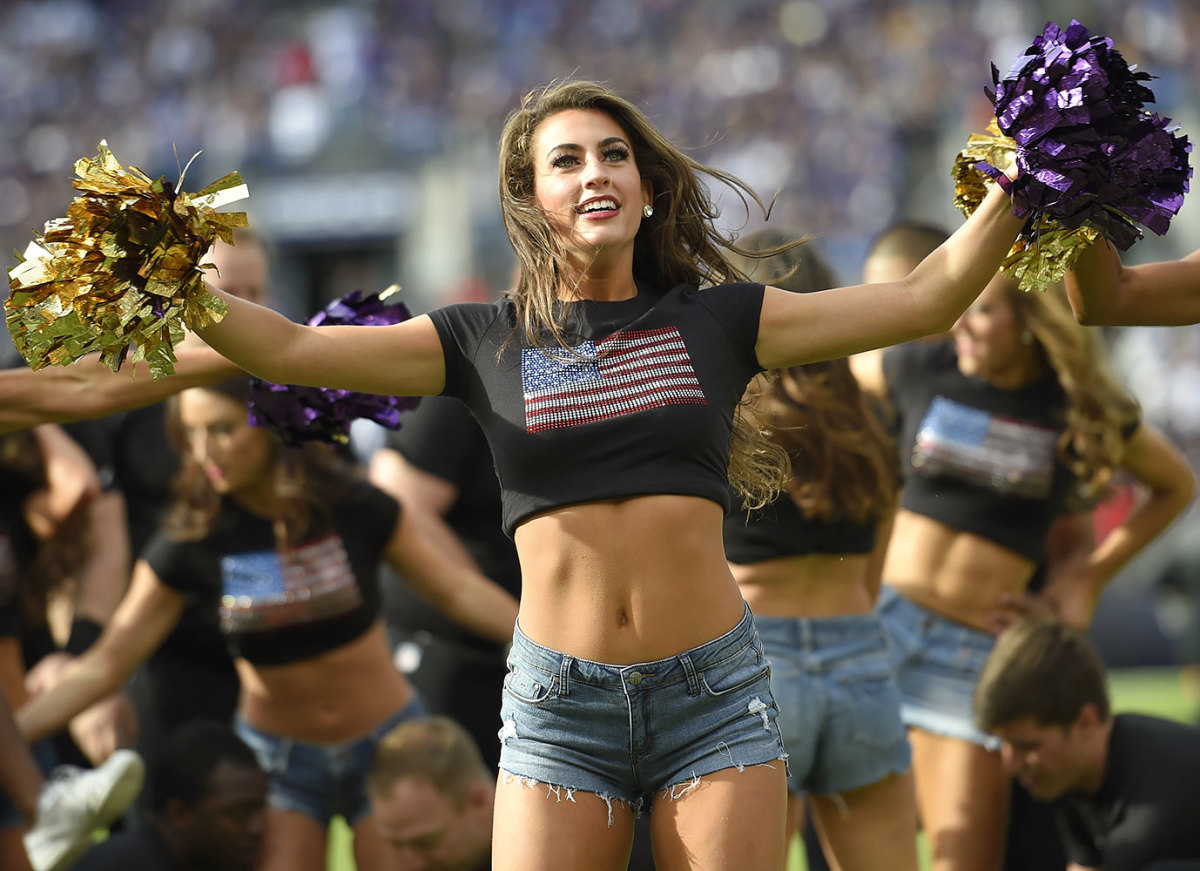
“At the end of the day, prestige doesn’t pay my rent,” she told The New York Post. “I can’t walk down to my leasing office and hand them my uniform for the month.”
According to NBC Sports Boston, Cowboys cheerleaders now earn around $500 per game, plus about $15 to $20 per hour, which adds up to about $75,000 for the season. This would make it one of the highest-paid cheerleading positions in the NFL. However, “America’s Sweethearts” director Greg Whiteley said he “never got a clean answer” about the cheerleaders’ pay, suspecting it varies depending on seniority.
In the Netflix series, Charlotte Jones, the co-owner of the Dallas Cowboys and daughter of team owner Jerry Jones, briefly addresses the pay issue. She says, “There’s a lot of cynicism around pay for NFL cheerleaders, and as it should be — they’re not paid a lot.
But the facts are they actually don’t come here for the money. They come here for something that’s actually bigger than that to them. They have a passion for dance. There are not a lot of opportunities in the field of dance to get to perform at an elite level.
It is about being a part of something bigger than themselves. It is about a sisterhood that they were able to form, about relationships that they have for the rest of their life. They have a chance to feel like they are valued, that they are special and that they are making a difference. When the women come here, they find their passion and they find their purpose.”
While it’s true that many cheerleaders build lifelong friendships and make connections that help them start new careers, the same could be said about any job people dream of. Sharon Vinick, one of Thibodeaux Fields’ attorneys, pointed out during the court case, “Well, it’s an honor to be a quarterback, but they don’t do it for free.”
This year, quarterbacks are making at least $795,000, which is the starting salary for rookies. The highest paid quarterback contract is about $55 million a year.
Cheerleading, however, is different. It is one of the most gendered professions in the country, with a history of sexualizing women. These attitudes are so deeply rooted that it might take more than a decade of lawsuits to change them.
The current system allows the NFL to simply express support for gender equality and move on. In 2016, after announcing a “Women’s Summit” to encourage young girls to join sports, NFL Commissioner Roger Goodell responded to questions about whether the league was sending a mixed message following several cheerleader lawsuits.
He said, “No, I don’t. These are employees of each club. We encourage policies that properly compensate all employees and provide the correct benefits. … It’s not a new issue for us. It’s something that we think should be done so that everyone’s compensated fairly.”
But the league never required teams to follow a minimum pay standard for cheerleaders or stop using third-party contractors to hire them. All the lawsuits from 2014 were settled without teams admitting any wrongdoing.
Thibodeaux Fields shared, “Not once was there just like, ‘You’re right, I’m sorry, we should have done better.’” But she added that she wouldn’t change anything. “Every lawsuit that’s successful, or every woman that is brave enough to be like, ‘This happened to me, and it needs to stop,’ … every little thing moves the needle just a little bit.”
‘…that’s the only nostalgia we have left.’
The history of NFL cheerleading officially started in the 1950s when the Baltimore Colts (now the Indianapolis Colts) became the first team to have cheerleaders. But the real beginning of cheerleading began with a stripper.
In 1967, Bubbles Cash caught the media’s attention when she danced in a miniskirt at the Cotton Bowl holding cotton candy. Tex Schramm, the Dallas Cowboys’ general manager, wanted to bring that energy to his cheer squad, which at that time was made up of local teenagers and led by a high school teacher.
In 1972, Schramm fired the cheerleaders and replaced them with young women wearing tiny shorts and fringe crop tops. In 1975, one of those new cheerleaders, Gwenda Swearingen, winked at the camera during a Monday Night Football broadcast. This helped create the idea of the sexy, girl-next-door cheerleader. Today, 24 out of 32 NFL teams have cheerleaders, all influenced by the Dallas Cowboys.
Sex appeal has continued to be a part of cheerleading, said Kimberly Archie, who founded the National Cheer Safety Foundation. She asked, “What sport has its own category on a porn website? Does lacrosse have a category for porn?”
It’s no surprise then that sexual harassment is a common issue in cheerleading. In 2018, news came out that the Washington Commanders invited suite holders and sponsors to watch a cheerleader calendar shoot without their permission.
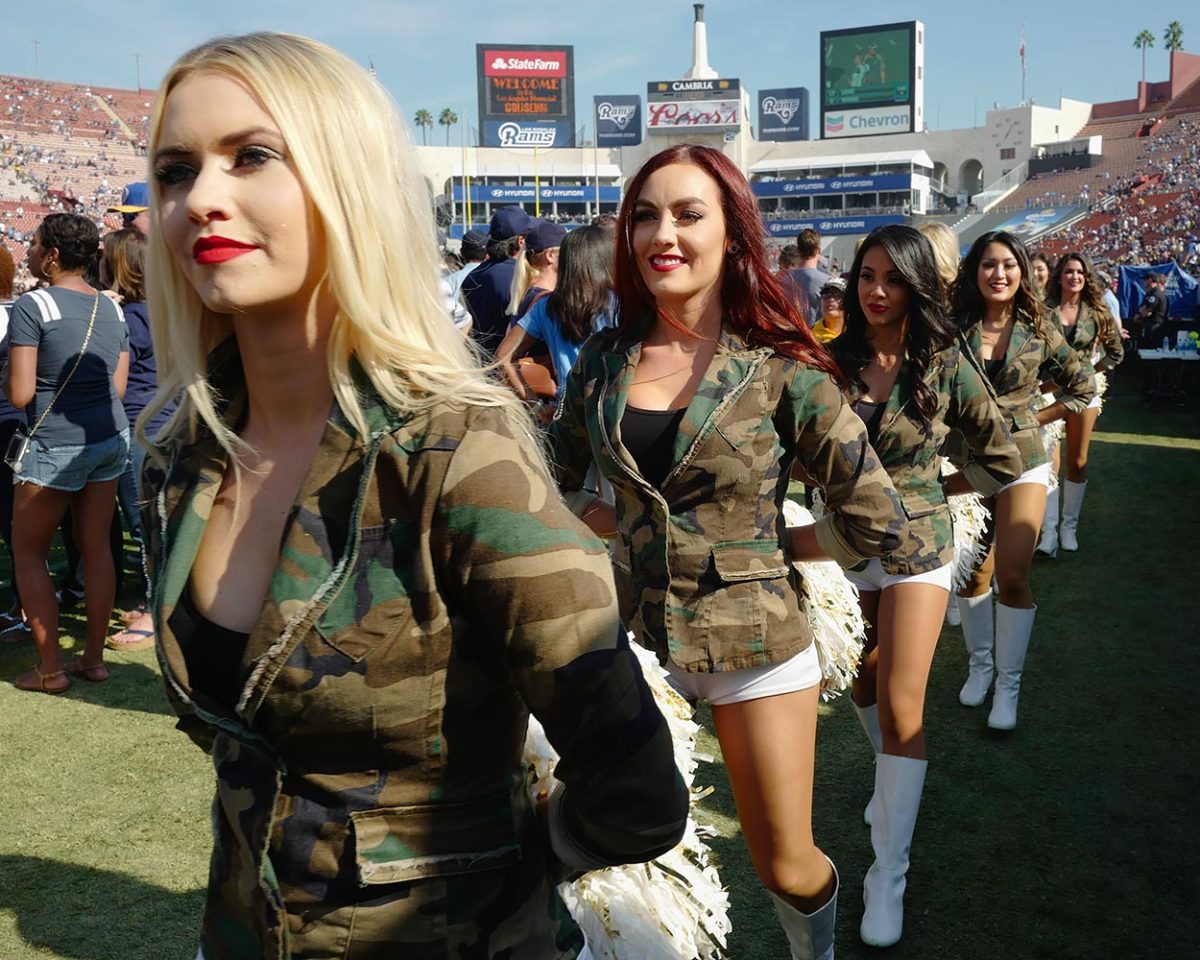
Some of the shoot was done topless. An investigation by a House oversight committee found that videos of the shoots, which included “nipple slips,” were shared among the team’s leadership. A Commanders spokesperson said that the team has worked hard to create a more inclusive and respectful environment.
Despite being sexualized, cheerleading is also seen as a symbol of American culture. Archie described it as something like “Chevrolet” and “apple pie,” things that are untouchable and shouldn’t be changed because “that’s the only nostalgia we have left.”
The combination of low pay, tough competition, and few protections for workers has created an environment where cheerleaders are encouraged to stay quiet about unfair pay, out of fear that speaking up would hurt their chances. This is why it took so long for some cheerleaders to speak out, and many still haven’t.
Archie explained, “There’s a lot of Stockholm syndrome in cheerleading. People don’t want to talk about safety issues, sexual abuse, or not getting paid…because it’s considered an honor to be a cheerleader in American society.”
Four months after Thibodeaux Fields filed her lawsuit, a similar lawsuit was filed in Buffalo, New York. A group of cheerleaders from the Buffalo Bills, called the Buffalo Jills, sued the team and the contractor who hired them. They said they were never paid for practices, games, and the many community appearances they were required to make.
The few paid appearances they had earned very little, and some of the appearances were degrading, like one where they were required to wear bikinis at a golf tournament, get dunked in a water tank, and then be “auctioned off” to a winner who rode around in a golf cart with them for the rest of the day.
The lawsuit also mentioned that the cheerleaders often faced inappropriate comments and groping from the public. The Bills cheerleaders also had strict appearance standards, including doing jumping jacks while staff checked their bodies, which was called a “jiggle test.”
One of the cheerleaders who filed the lawsuit, Maria Pinzone, earned just $105 by the end of the 2012-2013 season. She was also working as an accountant and knew that such low pay was probably illegal.
Days after the lawsuit was filed, the Bills disbanded their cheerleading squad, which Pinzone believed was done in retaliation for the lawsuit. Her fellow cheerleaders turned against her. In a 2019 documentary about cheerleaders’ lawsuits, called “A Woman’s Work,” Pinzone spoke with former Jills who were hesitant to join the lawsuit.
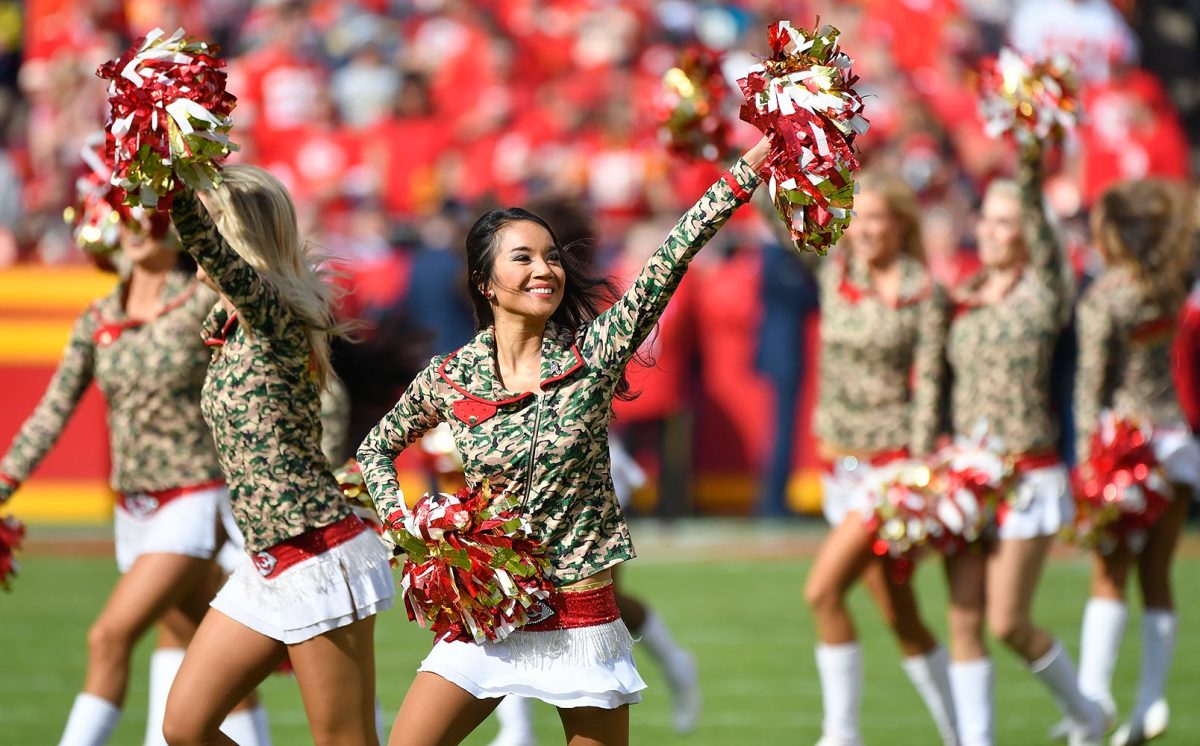
They told her that they knew what they had signed up for, and questioned if they would hurt the squad’s directors by supporting Pinzone.
Looking back, Pinzone said that many cheerleaders were ignoring what was happening and didn’t want to face the truth. “A lot of people had turned away from what was really going on and didn’t want to see it for what it was,” she said. “If they thought there might have been something wrong, they didn’t want to know anything else about it.”
The lawsuit didn’t get much support outside of the squad. As part of the case, then-Bills president and CEO Russ Brandon said, “I couldn’t have cared less if the Jills existed.”
In the documentary, when male fans were asked about the cheerleaders, one said, “Nobody cares about the Jills. All they do is tramp themselves out for guys — drunk guys.” Another said, “Which is you every time you go to a Bills game.” A third said, “In the grand scheme of things, you’re only going to get paid what you’re worth.”
For the women involved in both the Jills and Raiderettes lawsuits, the hardest part was the harsh criticism from their peers. Many cheerleaders didn’t think they were being exploited.
Here’s a paraphrased version of your article in simpler words:
‘No one wants to include the dancers — nobody.’
Yu Gu, the director of the documentary A Woman’s Work, which followed Thibodeaux Fields and Pinzone over several years, explained that the legal process was tough. She said, “The toll, the time it takes — getting lowballed and engaging in that process is constantly engaging with the idea that you’re worthless.”
Lisa Murray, who danced with Thibodeaux Fields for the Golden State Warriors NBA team, heard about these lawsuits in 2014 and started trying to form a union for NBA cheerleaders, bringing attention to their low pay. Over the years, she said she has been amazed by the rise of women in sports and the messages about how important it is to invest in and respect women. But, she added, “no one wants to include the dancers — nobody.”
Murray explained, “You’re going to be an archetype of exploitation, but we’re going to then use you to make money off of you, and then sort of convince you that you should be grateful to be here, that your beauty is going to get you to the next stage in life. That is a real message that is pushed that is so unbelievably damaging to women.”
In 2015, Murray helped pass a law in California that required teams to treat cheerleaders as employees instead of contractors. This meant that they were entitled to at least the minimum wage, overtime pay, and sick time. A similar bill was introduced in New York in 2015 but failed to pass. It has been reintroduced every year since.
None of the five lawsuits from 2014 went to a jury trial. Team spokespeople would not comment on the lawsuits or explain what teams have done to improve pay and working conditions for cheerleaders.
However, in September 2014, Thibodeaux Fields’ case settled for $1.25 million, which was shared among nearly 100 cheerleaders. They received between $2,500 and $6,000 for each season they spent with the team. Thibodeaux Fields herself got an extra $10,000 for being a named plaintiff. The Raiders (now the Las Vegas Raiders) raised pay to $9 per hour plus overtime, paid twice a month, covered expenses, and stopped fining cheerleaders.
The Cowboys settled with Wilkins in 2019 and raised their hourly rate from $8 to $12. They also increased the game fee from $200 to $400 — and possibly even later to $500.
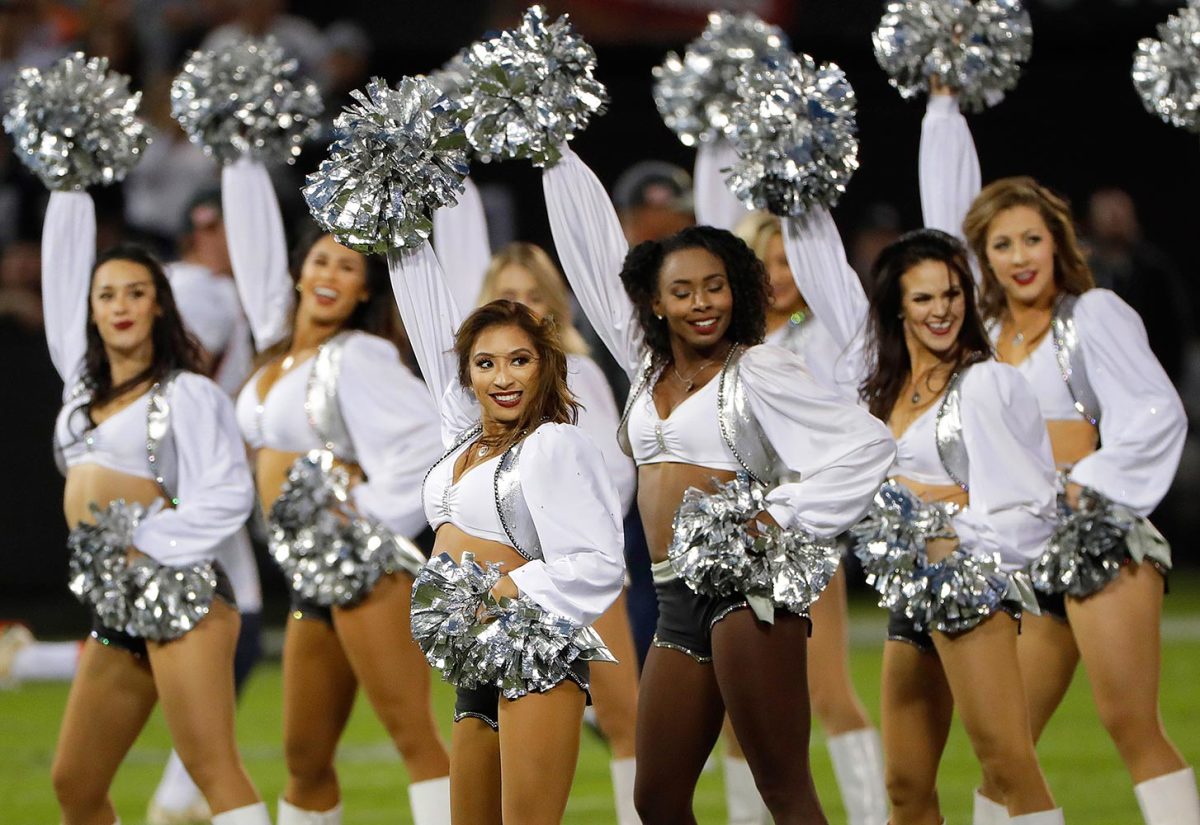
Other teams also settled their cases for smaller amounts.
Several teams, like the Los Angeles Rams, added men to their cheerleading teams. Other teams, like the Buccaneers, the Bengals, and the Minnesota Vikings, changed the costumes to make them less revealing.
The Buffalo Bills did not settle until 2022, when they agreed to pay $3.5 million to over 50 former cheerleaders who were part of the lawsuit.
The Jills cheerleading squad was never reformed.
Right now, the effort for better pay for cheerleaders seems to have stopped.
Cheerleading still faces a problem with supply and demand, according to David Berri, the co-author of Slaying the Trolls! Why the Trolls are Very, Very Wrong About Women and Sports, which includes a chapter about cheerleaders.
“As long as they’re paying the minimum wage, there is no law that says you have to pay them more. And because there is such a huge supply of women who want to be cheerleaders, there is no free agency. There is no market,” said Berri, who also teaches economics at Southern Utah University.
However, he said this isn’t an excuse. Many people want to be football players, top actors, or journalists, fields where pay problems exist and opportunities to move up are few. What makes cheerleading different is how much gender affects the situation.
Experts say suing the teams has been a good way for individual cheerleaders to get fair pay, but it hasn’t changed the system completely. “The law is a blunt instrument that has limited uses. It can only do so much,” said Darci Burrell, one of the lawyers in Thibodeaux Fields’ case. “In order for real change to happen, it’s got to happen probably elsewhere.”
For Murray, who has been fighting for cheerleaders’ and dancers’ pay for a decade, it always bothered her how the lawsuits made some teams issue statements about how much they value the women suing them. “The gap in what’s being said is: They acknowledge we are valuable, they acknowledge we are a huge part of the organization, but it doesn’t align with our compensation and our treatment,” she said.
And as Berri points out, the league could decide to end the subcontractor model. “The NFL could simply pass a ruling and say: ‘This is wrong, and no, you don’t get to hide behind a third party. These are people performing at our games,’” he said.
McCarthy, the NFL spokesperson, did not answer The 19th’s questions about whether the league would consider stepping in and creating a pay standard. In 2017, another group of cheerleaders sued the league directly in a class action, accusing the teams of working together to underpay cheerleaders. That case was eventually dismissed.
Archie believes more lawsuits could help create change, but going up against the powerful people who own the 32 NFL teams is a lot for women earning low wages.
In Murray’s opinion, the real solution is a union. The Jills tried to form a union in 1995 but failed, and no attempts have worked in recent years. People are scared that teams will punish them and cancel cheerleading squads, Murray said, and other industries like choreographers, training camps, and costume designers could be affected if cheerleaders form a union.
“Unfortunately, I can go pass bills, Lacy can sue a team. But in the end, if the women keep showing up and aren’t willing to go on strike … it actually won’t change,” Murray said.
Thibodeaux Fields is a little more hopeful. She has seen 10 years of changing conversations, 10 years of women saying her lawsuit inspired them to file their own. She can’t deny that some things have changed: The Cowboys cheerleaders are reportedly earning more than she earns now as a kindergarten teacher. Is it enough? No.
She’s moved on in many ways, but her main belief remains: “I fought for what felt like was the right thing. I feel really good about that.”
Now, the toddler she took care of after Raiderettes practice is a teenager who spent her childhood watching her mom fight for this cause. Thibodeaux Fields would have loved if Scarlett had inherited her love of dance, but her daughter isn’t interested. Scarlett is an analytical thinker who wants to fight for something. She now wants to become a lawyer.
